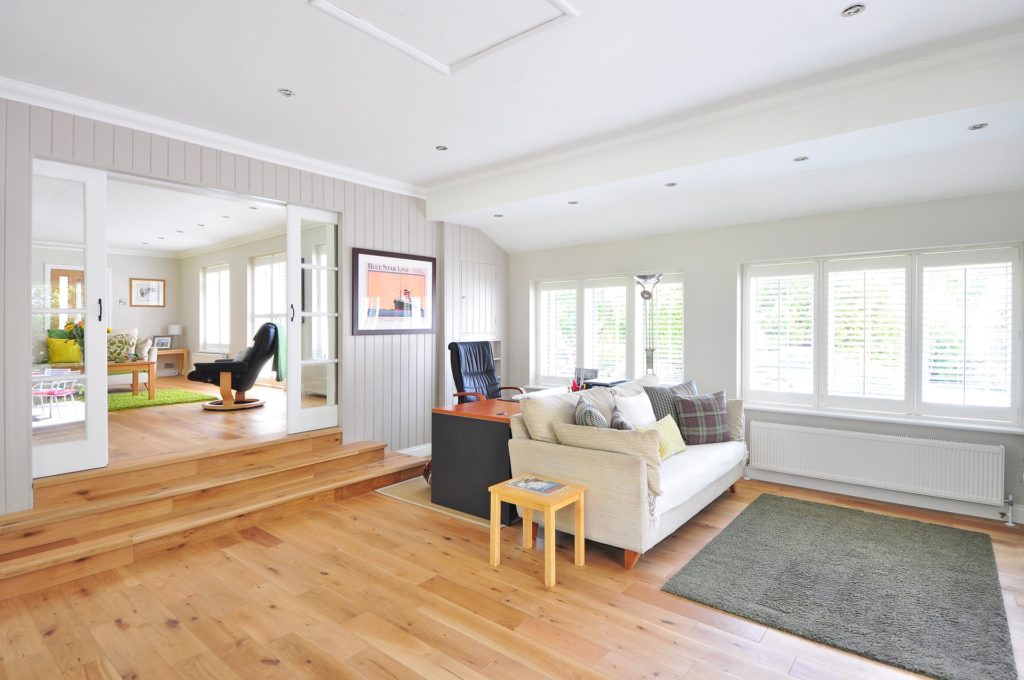
What is air pressure?
The force exerted by an air column above a surface as gravity pulls it down is known as air pressure. Simply put, this is the force of air pressing against something when it is in contact with it.
There are two major types of air pressure
- Positive air pressure indicates a higher pressure inside than outside, which forces the air to escape. As a result, some of the hot or cold air your system produces is lost.
- Negative air pressure occurs when the pressure inside the house is lower than the outside pressure. When this happens, your heating or cooling devices will have to work harder and consume more energy to move the air through your space.
Air pressure affects the sustainability of the building, our energy consumption, and indoor air quality that directly impacts human health.
Indoor air pressure can be influenced by the following devices:
- Heating, ventilation, air conditioning and cooling devices
- Air intakes
- Exhaust fans
- Economizers
- Dampers
Why do we need to monitor air pressure levels indoors?
Keeping a balanced air pressure inside the house is crucial as too much positive or negative pressure can adversely affect indoor air quality. An excessive amount of positive air pressure can cause the air inside the room to be pushed outside, eliminating all the benefits associated with using air conditioning. A high level of negative air pressure, on the other hand, can draw unfiltered air inside the house, leading to the buildup of harmful pollutants. Unbalanced air pressure could have varying impacts depending on the season, temperature, and humidity levels.
What are the benefits of controlling air pressure levels at home?
Reduced risk of respiratory illnesses
Other indoor factors may also contribute to these illnesses, but managing air pressure at home can reduce dampness, mold, and pollutants that may cause respiratory illnesses in occupants.
Avoid Carbon Monoxide Poisoning
In homes that do not have airtight envelopes, higher negative air pressures will lead to the infiltration of airborne particles and gaseous contaminants. When negative air pressure is present, carbon monoxide can be produced by fuel-burning appliances such as furnaces, boilers, and water heaters used indoors.
Safer Structural Integrity of the home
Because higher air pressure can expose your home to mold growth, the structural integrity of your home may be jeopardized if this continues. Moisture has become a major cause of building damage because it can lead to mold growth. It is estimated that moisture is responsible for majority of all building envelope problems.
What can be done to control air pressure inside the home?
Maintain optimal temperature and humidity levels
Indoor air pressure can be achieved by regulating the temperature and humidity levels. To avoid enough moisture for mold growth, keep indoor relative humidity between 30% and 50%.
Allow for more ventilation options
To regulate air pressure, other ventilation options must be opened. Controlling the air flow from outside to inside is the key to managing negative air pressure indoors. If you don’t have proper ventilation, you can try regulating levels by opening windows, using exhaust fans, and avoiding cooking with fuel-induced appliances indoors.
Repair Devices that control your air immediately
Mechanical failure can occur in devices such as thermostats, air regulators, air intakes, exhaust fans, economizers, and dampers at home or in a building. It is critical to repair them as soon as possible in order to maintain constant air flow into and out of your home.
How does uHoo help to improve air pressure levels at home?
uHoo can give a reliable real-time measurement of air pressure levels and all other critical items in your air so that you can be warned and take appropriate action. It can also measure and monitor all essential air quality indicators, give a real-time risk assessment of viral survival and transmission in the air with the uHoo Virus Index, and interact seamlessly with your heating, ventilation, and air conditioning systems to control your indoor air quality.
References:
Dohmen, L. M. E., Spigt, M., & Melbye, H. (2020, March 3). The effect of atmospheric pressure on oxygen saturation and dyspnea: The Tromsø Study – International Journal of Biometeorology. SpringerLink. Retrieved May 14, 2022, from https://link.springer.com/article/10.1007/s00484-020-01883-3
Hickey, L. (2019, March 26). The importance of measuring air pressure in commercial buildings. Retrieved May 14, 2022, from https://blog.belimo.com/blog/the-importance-of-measuring-air-pressure-in-commercial-buildings
Huizen, J. (2021, May 21). Barometric pressure headaches and migraine: What you need to know. Medical News Today. Retrieved May 14, 2022, from https://www.medicalnewstoday.com/articles/320038#_noHeaderPrefixedContent
Leivo, V., Kiviste, M., Aaltonen, A., Turunen, M., & Haverinen-Shaughnessy, U. (2015, December 30). Air pressure difference between indoor and outdoor or staircase in multi-family buildings with exhaust ventilation system in Finland. Energy Procedia. Retrieved May 14, 2022, from https://www.sciencedirect.com/science/article/pii/S1876610215019207
National Geographic Society. (2012, October 9). Atmospheric pressure. National Geographic Society. Retrieved May 14, 2022, from https://www.nationalgeographic.org/encyclopedia/atmospheric-pressure/
Seppänen, O., & Kurnitski, J. (n.d.). WHO Guidelines for Indoor Air Quality: Dampness and Mould. National Center for Biotechnology Information. Retrieved May 14, 2022, from https://www.ncbi.nlm.nih.gov/books
Yellowblue. (2019, April 10). Clearing your home of negative air pressure. yellowblue. Retrieved May 14, 2022, from https://yellowbluetech.com/2019/04/10/clearing-home-negative-air-pressure/


